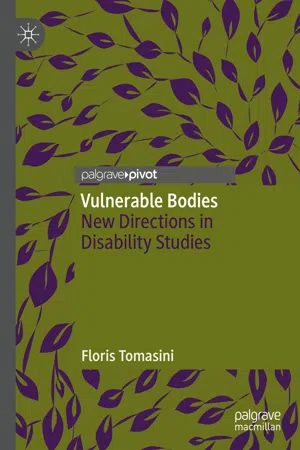Why Vulnerability
My interest in vulnerability began with having to come to terms with impairment. It developed further when I started identifying more with being vulnerable, rather than being physiologically impaired or socially disabled. I found that impairment and disability to be normatively
restrictive labels. Either, there was a danger of fixating too much on restoration from physiological abnormality. Or, there was this creeping sense of entitlement, where as a disabled person I could expect some form of special treatment or positive discrimination.
Being vulnerable, I shall argue, is a much wider and more fundamental framing than either the normatively restrictive notions of impairment or disability. Brené Brown, for example, describes vulnerability as ‘uncertainty, risk and emotional exposure’ (Brown, 2012). In other words, while being impaired and disabled is often vulnerable-making, embracing such vulnerability is not reducible to restorative correction or political emancipation.
Insights
My first insight began with the realisation that being vulnerable does not necessarily have to be understood as limitation only: that is, limitation in terms of freedom
from
constraint. I soon realised that recognising one’s vulnerability was also an opportunity to forge new meaning and alternative non-conformist identity in spite of being impaired and disabled. In sum, vulnerability can also be understood as a
freedom
to forge meaning and build a new identity.
My second insight grew out of the idea that one could identify with being impaired, disabled and vulnerable. What I found was that the disability literature tended towards finding a foundational model or theory of disability. That is to say one model of disability, or theory, replacing another. I wanted to get away from this and develop an approach that included the best in scholarship about impairment and disability, but also transcended its restrictive limitations. I’ve called this the integral
approach to vulnerability.
My third insight came out of widening the way we talk about impairment, disability and vulnerability by looking at narrative and identity making. Here I am greatly indebted to Arthur Frank’s The Wounded Story-Teller (1997). I have adapted his tripartite narrative form to talk about vulnerable embodiment in respect to impairment and disability rather than illness.
Chapter Outline
This volume is divided into five chapters, including this chapter, a short introduction.
Chapter 2 critically introduces the idea of vulnerability and in particular the courage to be vulnerable
(Brown, 2012). The chapter starts off with an exposition of Brené Brown’s thesis, where she rehabilitates a much misunderstood idea: what it is to be vulnerable. The chapter then takes a more critical turn: the main argument being that Brown tends towards a simple
(individualistic) rather than more complex (social) understanding of vulnerability. In appreciating the more complex form of vulnerability, we need to bring the embodied experience of impairment and disability back in.
Chapter 3 is an argument than transcends disability modelling in general and the social model of disability in particular. It is in two parts. Part one is a critical summary of models and theories of disability. It is framed in such a way, as to distinguish classical, from revisionist and post-revisionist approaches in disability studies. Nevertheless, in essence, it is a truncated disability literature review. Part two is an attempt to transcend disability debate. In doing so, there is an attempt to offer what I call an integral
approach to vulnerability. This is a way of coherently integrating the existent scholarship on impairment and disability within a wider rubric of vulnerability, but also transcending the present limitations to such debates.
Chapter 4 is a conscious attempt to widen the scope of the debate so far, by introducing the notion of vulnerable narratives. This is born out of the integral approach, and accrues vulnerable-making experiences of being impaired and disabled. A cultural trope of vulnerability is the weft of experience, through which personal stories weave in and out. Three tropes are identified: victim; restoration and seeker (self-discovery
and activist).
Chapter 5 is a brief conclusion that ends by sketching out some of the advantages of widening out the disability debate to include what and how it is to be vulnerable.
References
- Brown, B. (2012). Daring Greatly: How the Courage to Be Vulnerable Transforms the Way We Live, Love, Parent and Lead. New York: Gotham Books/Penguin Group.
- Frank, A. (1997). The Wounded Storyteller: Body, Illness and Ethics. Chicago and London: University of Chicago Press.
